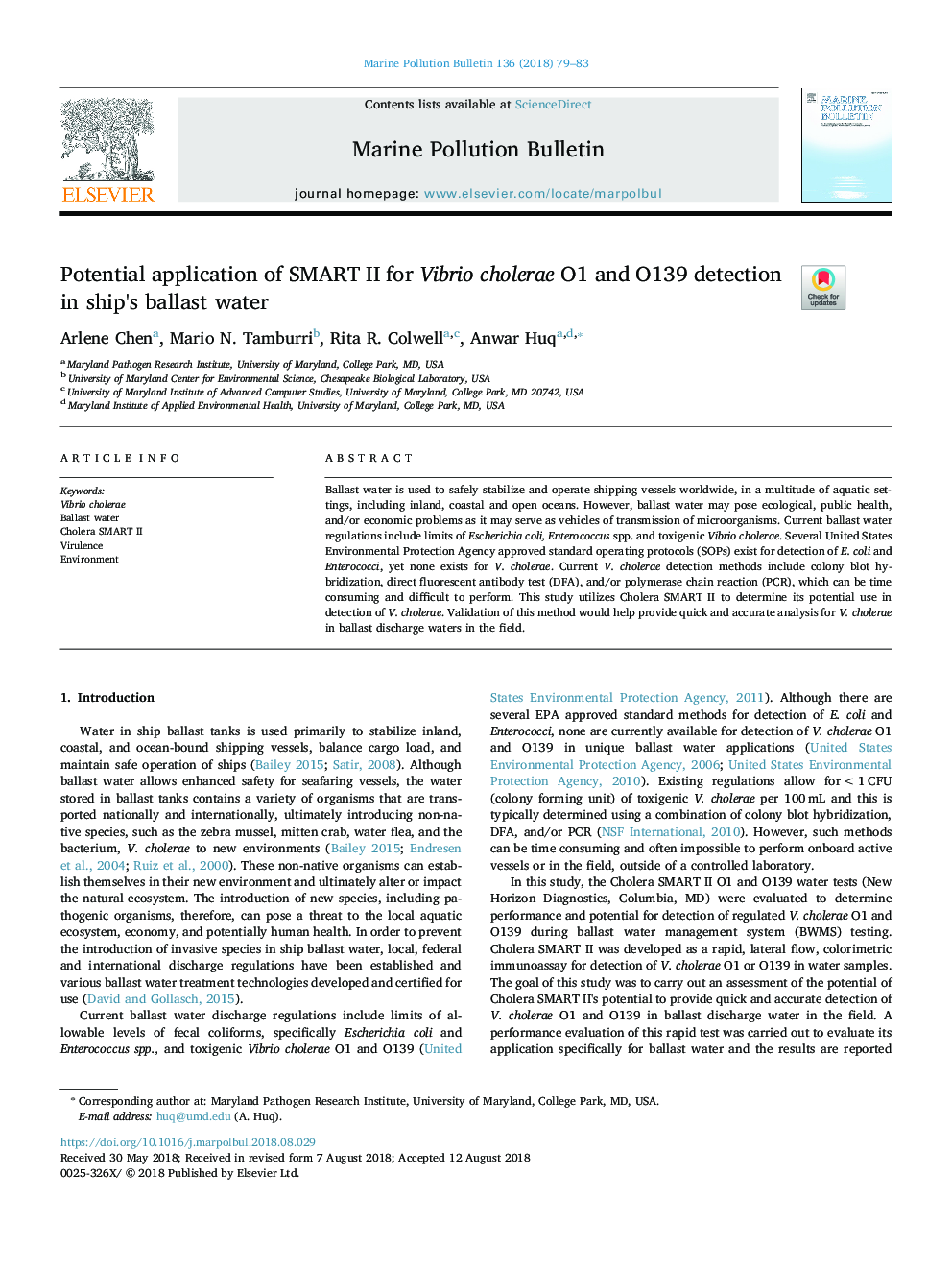| Article ID | Journal | Published Year | Pages | File Type |
|---|---|---|---|---|
| 8966028 | Marine Pollution Bulletin | 2018 | 5 Pages |
Abstract
Ballast water is used to safely stabilize and operate shipping vessels worldwide, in a multitude of aquatic settings, including inland, coastal and open oceans. However, ballast water may pose ecological, public health, and/or economic problems as it may serve as vehicles of transmission of microorganisms. Current ballast water regulations include limits of Escherichia coli, Enterococcus spp. and toxigenic Vibrio cholerae. Several United States Environmental Protection Agency approved standard operating protocols (SOPs) exist for detection of E. coli and Enterococci, yet none exists for V. cholerae. Current V. cholerae detection methods include colony blot hybridization, direct fluorescent antibody test (DFA), and/or polymerase chain reaction (PCR), which can be time consuming and difficult to perform. This study utilizes Cholera SMART II to determine its potential use in detection of V. cholerae. Validation of this method would help provide quick and accurate analysis for V. cholerae in ballast discharge waters in the field.
Related Topics
Physical Sciences and Engineering
Earth and Planetary Sciences
Oceanography
Authors
Arlene Chen, Mario N. Tamburri, Rita R. Colwell, Anwar Huq,
